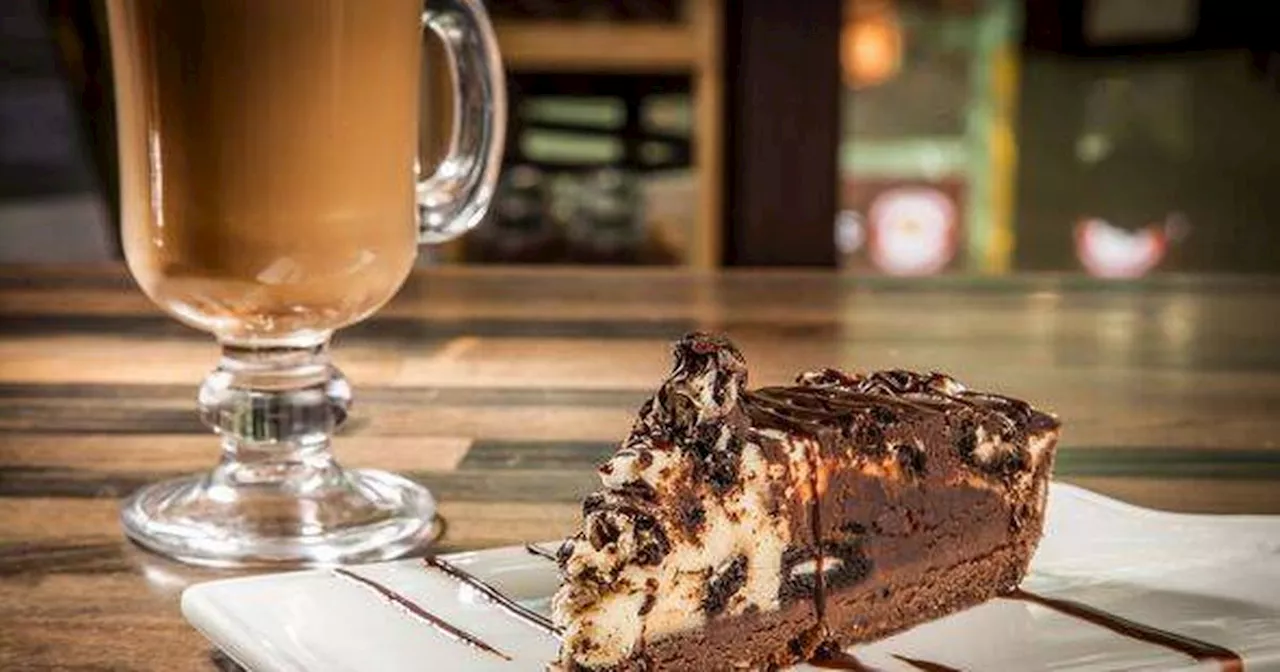This case study explores the story of Lark & Berry, a luxury jewellery company founded by Laura Chavez, which is challenging the traditional diamond industry by using lab-grown diamonds. It examines the ethical and environmental concerns surrounding mined diamonds, the growth of the lab-grown diamond market, and the strategies that Lark & Berry is using to position itself as a sustainable and ethical alternative.
The judges of the Goldsmiths’ Craft and Design Council Graff jewellery award were in for a shock when they selected the Atelier Asymmetric Bow suite of jewels as their 2019 winner. The prize was withdrawn after they discovered the diamonds used had not been mined, but “cultured” in a laboratory, and sourced by Lark & Berry, a newly launched luxury jewellery design company based in London, which had commissioned the piece.
Lark & Berry’s founder is Laura Chavez, a Mexican who took a history of jewellery course at the London Jewellery School, in 2017, while studying for her MBA. She resolved to challenge the industry and “do things differently” after learning that lab-grown diamonds could provide a way around the extensive conflict and human rights concerns caused by gem mining. Chavez knew she would face consumer resistance, hostility from the traditional jewellery industry, and the threat of competitors. At first, she was motivated primarily by a concern for human rights. “I remember the movie Blood Diamond coming out and people really becoming aware of how diamonds were sourced, and the things that were done to the communities — kids losing arms and things like that,” she says. “That was horrible.” Companies often exploit employees who work in diamond mines, paying very low wages and even using slave and child labour. In India, an estimated 20 per cent of diamond miners are children. In the past few decades, African nations including Sierra Leone, Liberia, Angola, the Republic of the Congo, Ivory Coast, the Central African Republic and the Democratic Republic of Congo, have endured violent conflicts fuelled by demand for diamonds. For Chavez, there were also important environmental concerns. The four major kinds of diamond mining — open-pit, underground, alluvial and marine — all have harmful impacts. These include soil erosion, which contributes to deforestation, as well as deleterious effects on water resources, air quality, wildlife, soil quality and direct CO₂ emissions. The clearance of forests and vegetation has also reduced CO₂ uptake. Lab-grown diamonds, like mined ones, also consume large amounts of energy in their production. A 2010 study found that Florida-based Gemesis used 20kW of energy to create each carat of synthetic stone, producing about 11.8kg of CO₂ emissions. However, the Canadian Ekati diamond mine — which is widely recognised for its emissions reductions — created more than five times more: 64.8kg of CO₂ emissions per carat mined. As lab-grown diamonds became less expensive to make, Chavez noticed that increasing numbers of customers began to express concern over sustainability. “We needed to remind customers — or inform who weren’t aware — that cultured diamonds and stones are the only gemstones that can be sustainable for the planet,” she says. She focused on educating the marketplace by using trusted sources in the media to boost the credibility of her message. She also staged events that attracted the world’s fashion press, gaining endorsements from supermodels and celebrities. Lark & Berry became the first brand in the world to offer diamonds for engagement rings made in the UK using 100 per cent renewable energy. About two years after launching her company, Chavez had visited Skydiamond — the lab-diamond manufacturing company of British serial entrepreneur Dale Vince — and saw the potential for reducing carbon emissions in the sector. The process used at Skydiamond captures CO₂ directly from the air and produces diamonds using a renewable-energy powered electrolysis machine. The Natural Diamond Council is made up of seven of the world’s leading diamond-mining companies, including De Beers, Alrosa and Rio Tinto. In 2016, when it was known as the Diamond Producers Association, it launched an advertising campaign targeting millennials. In a drive to enhance the appeal of “natural” stones, forged from the earth, the campaign used the slogan “Real is rare”. But some mining companies have also began developing their own lab-grown versions. Chavez wonders if she might need to start manufacturing herself or to expand geographically — for example, establishing a physical presence in the US, one of the biggest consumers of jewellery in the world and the largest consumer market for lab-grown diamonds. That would require reflection on her brand’s sustainable and ethical positioning, and how to sell and distribute its products
Entrepreneurship Sustainability Lab-Grown Diamonds Sustainability Ethical Jewellery Diamond Mining Consumer Resistance Business Disruption Environmental Impact
United Kingdom Latest News, United Kingdom Headlines
Similar News:You can also read news stories similar to this one that we have collected from other news sources.
 Mary Berry Recommends Fridge Storage for EggsBaking expert Mary Berry advises storing eggs in the refrigerator for optimal freshness and safety, aligning with American practices. She emphasizes the importance of consistent cool temperatures and warns against storing eggs in the fridge door.
Mary Berry Recommends Fridge Storage for EggsBaking expert Mary Berry advises storing eggs in the refrigerator for optimal freshness and safety, aligning with American practices. She emphasizes the importance of consistent cool temperatures and warns against storing eggs in the fridge door.
Read more »
 Mary Berry Reveals Her Secret to Keeping Eggs FreshRenowned chef Mary Berry shares her preferred method for storing eggs in her acclaimed cookbook, 'Mary Berry's Complete Cookbook'. She recommends keeping eggs in the refrigerator to extend their freshness and prevent the absorption of flavors and odors. The article also highlights the importance of consistent cool temperatures for countertop storage and advises against placing eggs in the fridge door due to temperature fluctuations.
Mary Berry Reveals Her Secret to Keeping Eggs FreshRenowned chef Mary Berry shares her preferred method for storing eggs in her acclaimed cookbook, 'Mary Berry's Complete Cookbook'. She recommends keeping eggs in the refrigerator to extend their freshness and prevent the absorption of flavors and odors. The article also highlights the importance of consistent cool temperatures for countertop storage and advises against placing eggs in the fridge door due to temperature fluctuations.
Read more »
 Mary Berry Reveals Her Egg Storage SecretCelebrity baker Mary Berry advises storing eggs in the refrigerator to maintain freshness, citing temperature fluctuation as a key factor in spoilage. Her recommendation aligns with American practices and the advice of food hygiene experts who emphasize refrigeration and avoiding the fridge door for optimal egg storage.
Mary Berry Reveals Her Egg Storage SecretCelebrity baker Mary Berry advises storing eggs in the refrigerator to maintain freshness, citing temperature fluctuation as a key factor in spoilage. Her recommendation aligns with American practices and the advice of food hygiene experts who emphasize refrigeration and avoiding the fridge door for optimal egg storage.
Read more »
 Mary Berry's Quick & Easy Chocolate Cheesecake RecipeThis recipe for a chocolate cheesecake from Mary Berry is perfect for New Year's Eve. It's quick, easy, and delicious!
Mary Berry's Quick & Easy Chocolate Cheesecake RecipeThis recipe for a chocolate cheesecake from Mary Berry is perfect for New Year's Eve. It's quick, easy, and delicious!
Read more »
 Angelina Jolie and Halle Berry Team Up for Action-Packed Thriller 'Maude v Maude'Oscar-winning actress Angelina Jolie is set to star in 'Maude v Maude', a female-led action thriller alongside Halle Berry. The film is described as a mix of 'Mr. & Mrs. Smith' and 'Mission Impossible' with a comedic twist, and will feature exotic locations.
Angelina Jolie and Halle Berry Team Up for Action-Packed Thriller 'Maude v Maude'Oscar-winning actress Angelina Jolie is set to star in 'Maude v Maude', a female-led action thriller alongside Halle Berry. The film is described as a mix of 'Mr. & Mrs. Smith' and 'Mission Impossible' with a comedic twist, and will feature exotic locations.
Read more »
 Mary Berry Finally Settles the Great Egg Storage DebateBaking icon Mary Berry has weighed in on the age-old debate of whether to store eggs in the fridge or at room temperature, offering her expert advice in her latest book.
Mary Berry Finally Settles the Great Egg Storage DebateBaking icon Mary Berry has weighed in on the age-old debate of whether to store eggs in the fridge or at room temperature, offering her expert advice in her latest book.
Read more »
